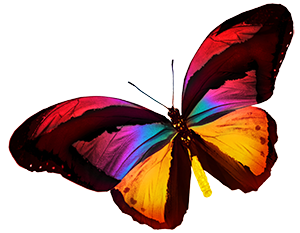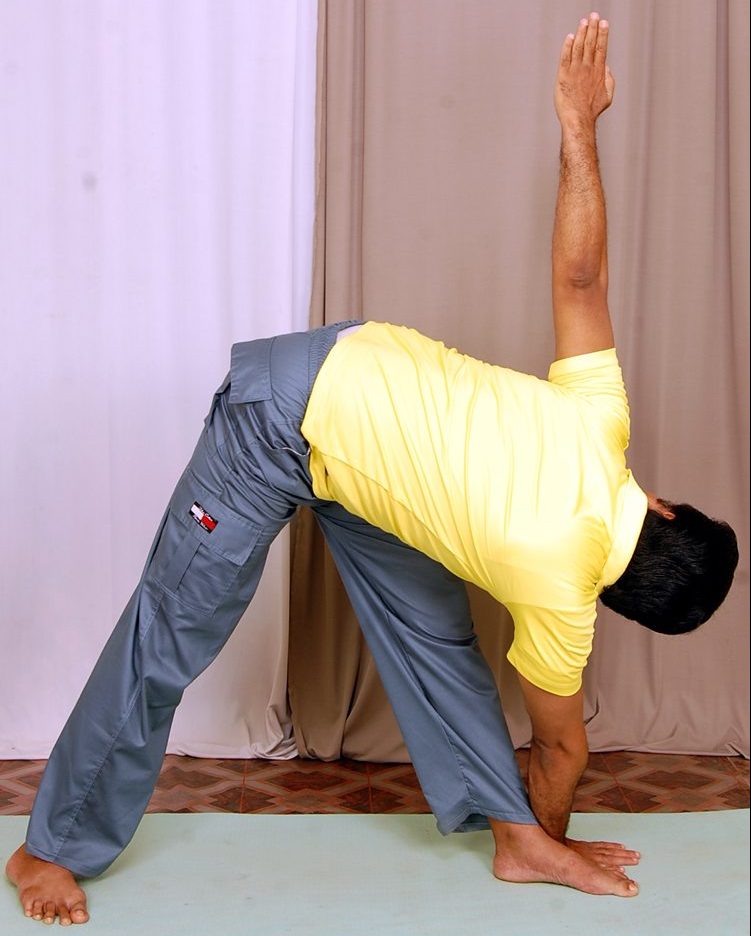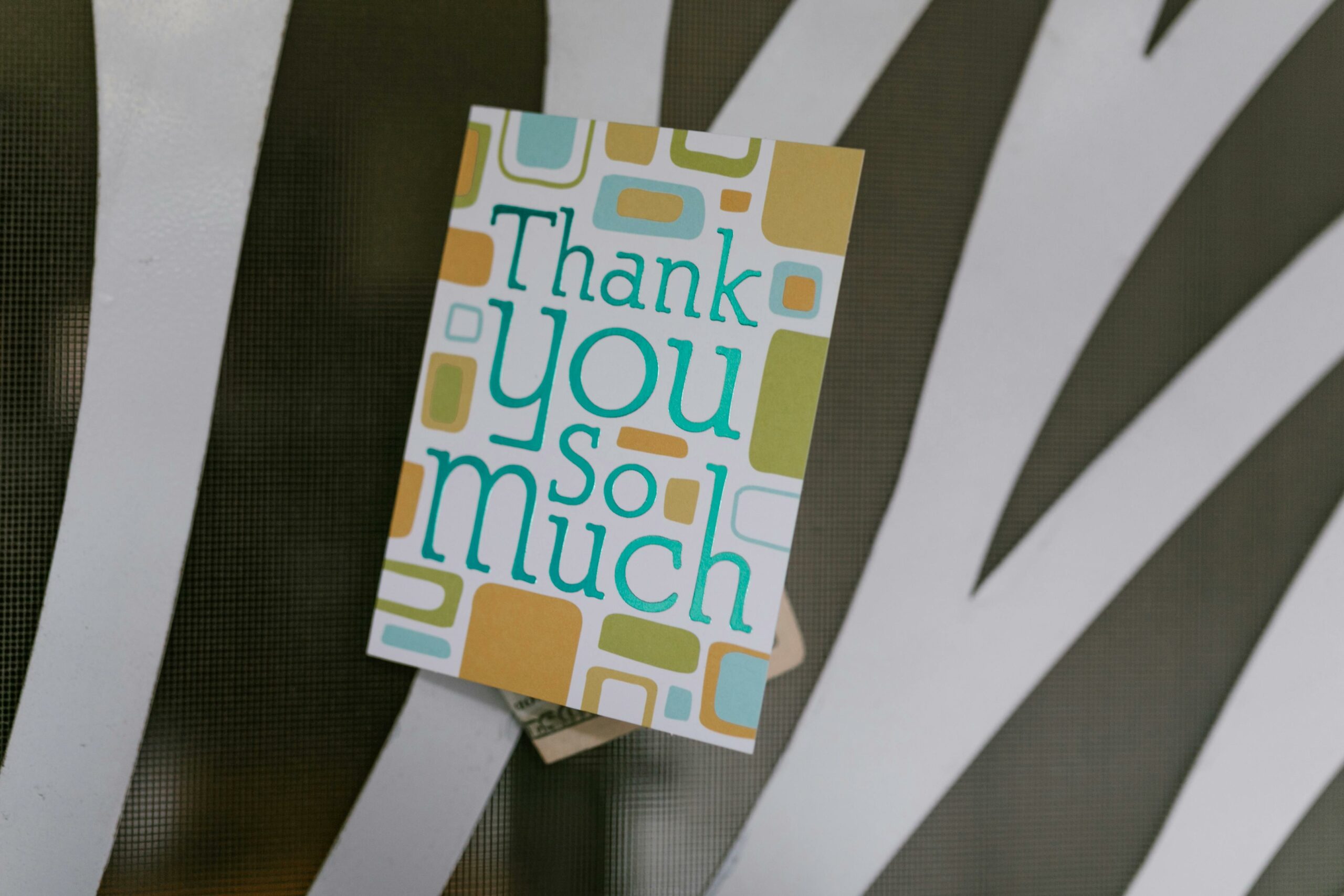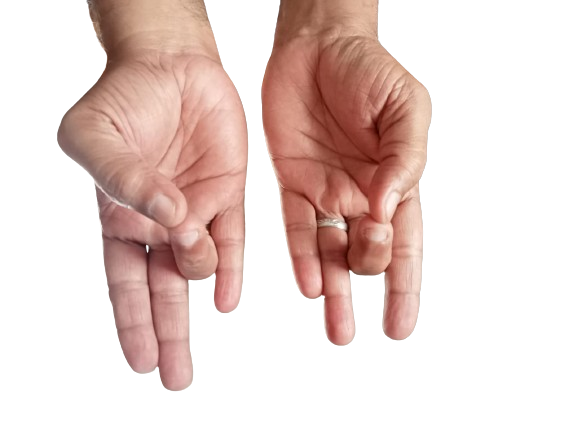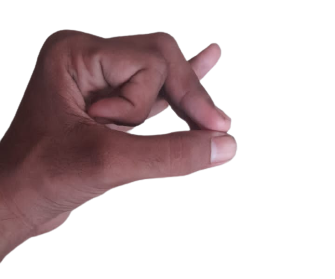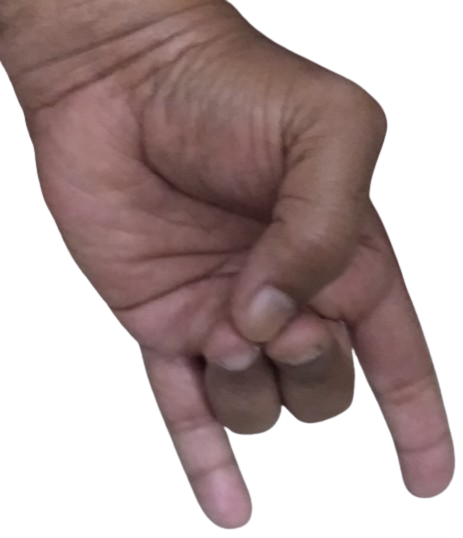'Parivrtta' in Sanskrit means 'revolved', 'tri' means 'three' and 'kona' means 'angle'. Since the practitioner revolves around in the opposite direction, the pose is called Revolved Triangle Pose. It is called Parivrtta Trikonasana in Sanskrit.
Just as in Triangle Pose, muladhara, svadhittana and manipura chakras are stimulated in Revolved Triangle Pose. Hence, performing the pose promotes stability and helps to attract universal energy.
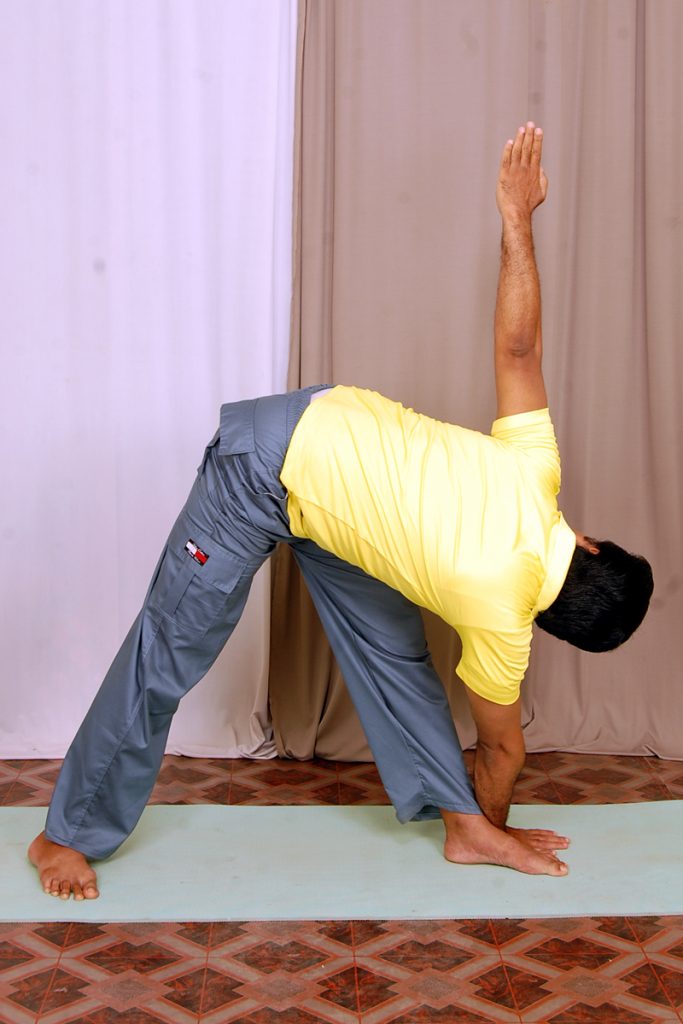
Other Benefits of Revolved Triangle Pose
- Strengthens lungs
- The pose improves spine flexibility and spine strength.
- It is an effective yoga pose for back pain.
- Regular practice of the pose helps to strengthen the nervous system.
- Neck pain gets relieved.
- The pose stimulates functions of abdominal organs.
- Reduces excess fat in hips
- It improves flexibility in legs and also strengthens the legs.
- The pose relieves menstrual pain.
- It is an effective yoga pose for sciatic pain.
- The pose relieves anxiety.
Instructions
- Assume Mountain Pose.
- Maintain about two to three feet distance between your legs.
- Inhale as you lift your hands sideways up to shoulder level. Keep your palms facing downwards.
- Turn your left foot slightly towards your right. Keep your right foot at an angle of 90 degrees with the toes facing sideways.
- Exhale as you turn your torso towards your right.
- Place your left palm on the floor on the outer side of the right foot.
- Lift your right hand upwards. Your right hand should be aligned to your shoulder.
- Turn your head upwards and fix your gaze on the fingers of the lifted hand. Alternately, you can look straight.
- Hold the pose for 30 seconds. Repeat the same steps switching your hands.
Note
Those with severe spine conditions and hip problems should refrain from practicing Revolved Triangle Pose.
Those with severe neck pain can look straight instead of turning the head upwards. Those with high blood pressure can perform the pose with their face turned downwards.
In case of difficulty in placing the palm on the floor, you can hold your leg where you can comfortably reach. Alternately, you can place a yoga block near your leg and place your palm on the same.
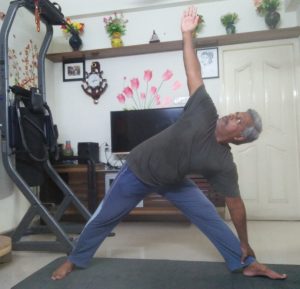
Yoga Pose for Day 56 - Extended Triangle Pose (Uthita Trikonasana)
Our earlier posts were about Half Triangle Pose, Triangle Pose and Revolved Triangle Pose. In today's post we will be covering Extended Triangle Pose.
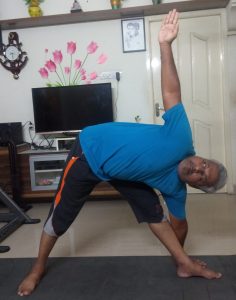
Yoga Pose for Day 54 - Triangle Pose (Trikonasana)
Triangle Pose is called Trikonasana in Sanskrit. 'Tri' in Sanskrit means 'three', 'kona' means 'angle'. The formation of three triangles in this pose may have been the reason behind the name of the pose.
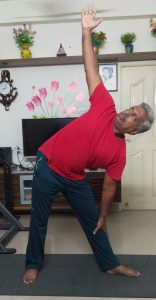
Yoga Pose for Day 53 - Half Triangle Pose (Ardha Trikonasana)
Half Triangle Pose - This pose is one of the easiest side bends that prepares your body for middle level side bending poses including Triangle Pose and deep side bends.
